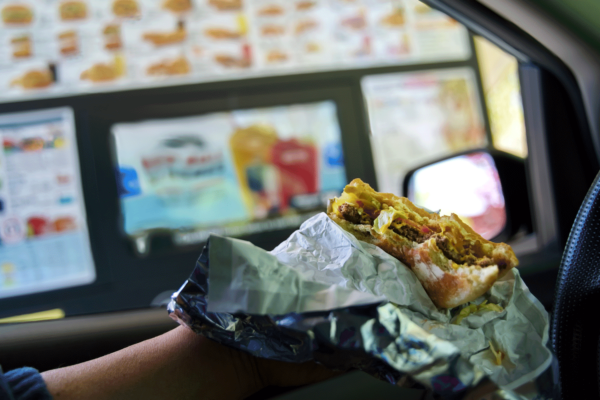Dollar stores, with their simple promise of $1 price tags on a range of products from cleaning products and beauty supplies to snacks and steak, are tightly wound with American consumers’ shopping rituals.
The three largest chains in the space — Dollar General, Family Dollar and Dollar Tree — have grown so much from their roots in “variety” and five-and-dime stores that they now have more locations than Starbucks and McDonald’s combined. And according to our data, a whopping 94% of consumers say they’ve shopped at a dollar store.
So it’s perhaps no surprise that — despite controversy surrounding the lack of fresh food in most locations and the creation (or exacerbation) of food deserts, the closure of mom-and-pop stores in the wake of their market entrances, and restrictions over their expansion in cities from Atlanta to Oklahoma City — these players are reporting stronger-than-expected earnings and improved revenue forecasts for the year. And they’re poised to add even more locations, too.
With economic uncertainty and record-high inflation, it’s good to be a store that stands for value, even if that dollar store famously — or should we say, controversially — raised their prices to $1.25, as Dollar Tree did last year. The backlash following that decision was swift but also short-lived — as consumers may have initially scoffed, but kept on shopping. It’s just another sign of this segment’s resiliency, and a nod to their history.
To help all factions of the food industry take insights from the rise of dollar stores, we examine the rapidly changing retail landscape, the growing demand for food in new areas, and the segment’s focus on value, even though the definition of value has had to adjust over time.
How dollar stores began
Dollar stores’ dime store ancestors weathered the Great Depression when many other retailers were going out of business, and variety stores — the store model that today’s dollar stores are most closely based on — took off in the difficult economic times surrounding WWII. The most popular chain of that era was Ben Franklin, which opened in 1927 and grew to around 2,400 stores at its height (a few still exist today). Entrepreneur K.R. Perry opened his own Ben Franklin franchise in 1953, setting the stage for what would later become the Dollar Tree brand.
Two years later, the first Dollar General store opened in Springfield, KY, and next came Family Dollar, which opened in 1958. Though it had its origins in Ben Franklin stores, the Dollar Tree brand didn’t show up until 1993, changing its name from the store’s original “Only $1.00” moniker that populated malls in years prior. The name didn’t change how founders viewed that single price tag mantra, though. Up until as recently as just a few months before the move to $1.25, Dollar Tree executives vowed they’d stick with $1. (In case you’re wondering, that’s actually nearly $11 in today’s dollars, but an Eleven-Dollar Store just doesn’t have the same ring to it).
Smaller, it turns out, is sometimes better
Dollar stores started in small towns and outer suburbs, and expanded in areas that were deemed undesirable for larger retailers like Walmart or Target, big supermarkets, or drug stores. Their store footprints, closer to a 7-Eleven than a superstore, made them more nimble. The segment has historically targeted low-income shoppers, but the turn of the century brought in a broader base of clientele, but also new competitors.
The dollar store segment managed to grow markedly thanks to that broadening clientele throughout the early 2000s, particularly after the 2007-2009 recession. In 2015, Dollar Tree bought Family Dollar for $8.5 billion, making it the largest dollar store chain at the time with annual revenue of about $19 billion. (Dollar General took over the crown as the largest dollar store chain last year.) Today, “the big three” account for half of all new store openings in the U.S., according to Coresight Research. And in 2020, an astonishing 1 in 3 stores opening in the country was a Dollar General.
The future is $1
If history is a guide, dollar stores should see their already impressive growth rates accelerate in the near future as inflationary pressure increases and the U.S. stares down the possibility of a recession.
Because who doesn’t want something for dinner and some supplies to clean up after for less than the price of a sandwich?
Samantha Des Jardins is a copywriter at Datassential.
This article is an excerpt from the June issue of Creative Concepts, available here in ReportPro, Datassential’s vast food and beverage report library. If you’re not a subscriber and would like access to this issue and the rest of Datassential’s latest data and publications, reach out to us here.






